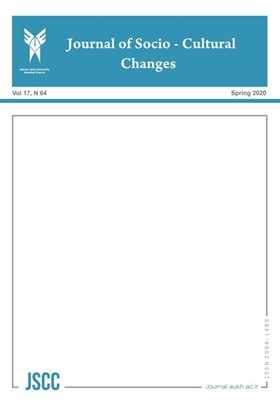Sociological Study of Organizational Work Culture and Its Effects on Promoting Productivity of Public University Staff in Sabzevar City
Subject Areas : Familymehdi moradi 1 , Alireza kaldi 2 , Seyed Mohammad Seyedmirzaie 3
1 - university of researches & sciencesPhD Student in Sociology, Science and Research Branch, Islamic Azad University, Tehran, Iran
2 - Professor, Department of Sociology, Faculty of Social Sciences, University of Tehran, Iran
3 - Professor, Department of Sociology, Science and Research Branch, Islamic Azad University, Tehran, Iran.
Keywords: Productivity, Administrative Staff, Keywords: work culture, public universities,
Abstract :
The development of a desirable organizational work culture in successful organizations depends on the ability and creativity of individuals to actively participate in the proper management of the work culture. The purpose of this research is to study the sociological study of organizational work culture and its effects on the productivity of administrative staff of public universities in Sabzevar. The research method is based on a scientific approach and survey type and a questionnaire is used to collect information. The statistical sample is calculated based on the Cochran formula and the Morgan table of 205 people. The results indicate that there is a positive and significant relationship between the components of work culture with each of the components of employee productivity. Among the components of the work culture, organizational dimension, with the correlation coefficient of 0.754, the strongest and economic demension, with a correlation coefficient of 0.448, had the weakest relation with the work culture. Among the components of employee productivity, the partnership demension, with the highest correlation coefficient of 0.855, and the strongest organizational commitment, with a correlation coefficient of 0.557, had the weakest relationship with employee productivity. Also, based on the beta coefficient of regression, the total demensions of work culture explain 68 percent of the variance in employee productivity.
_||_


